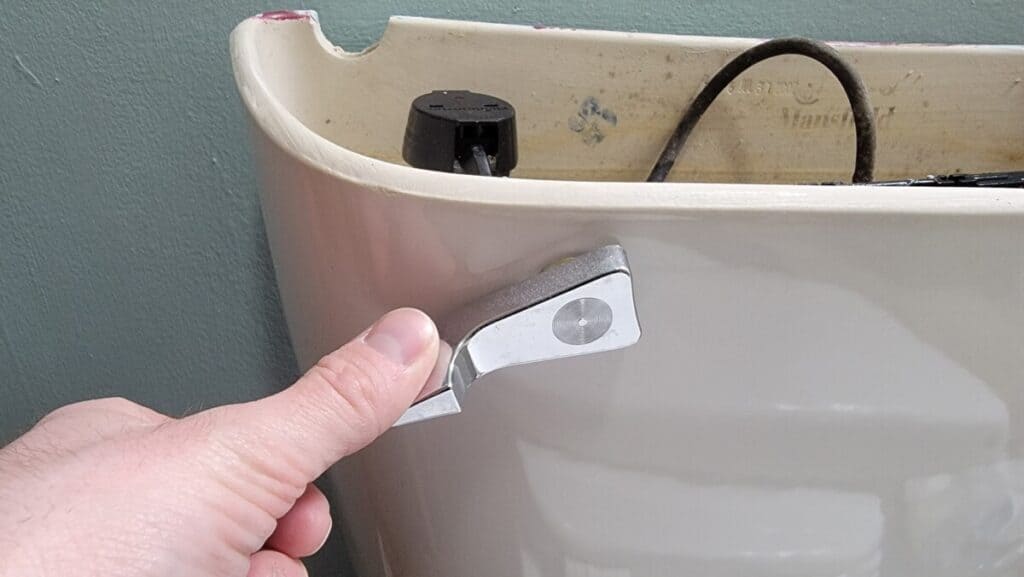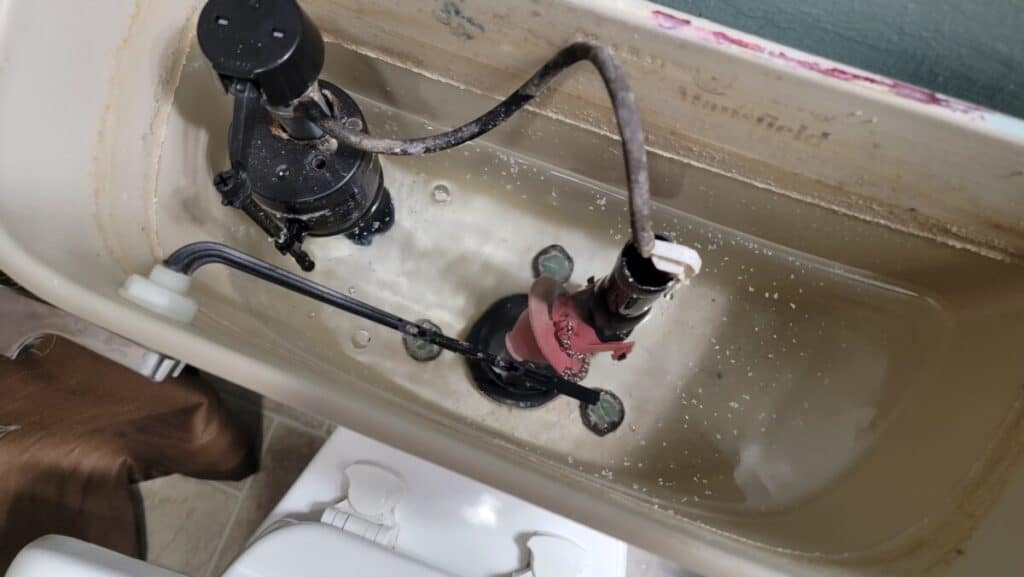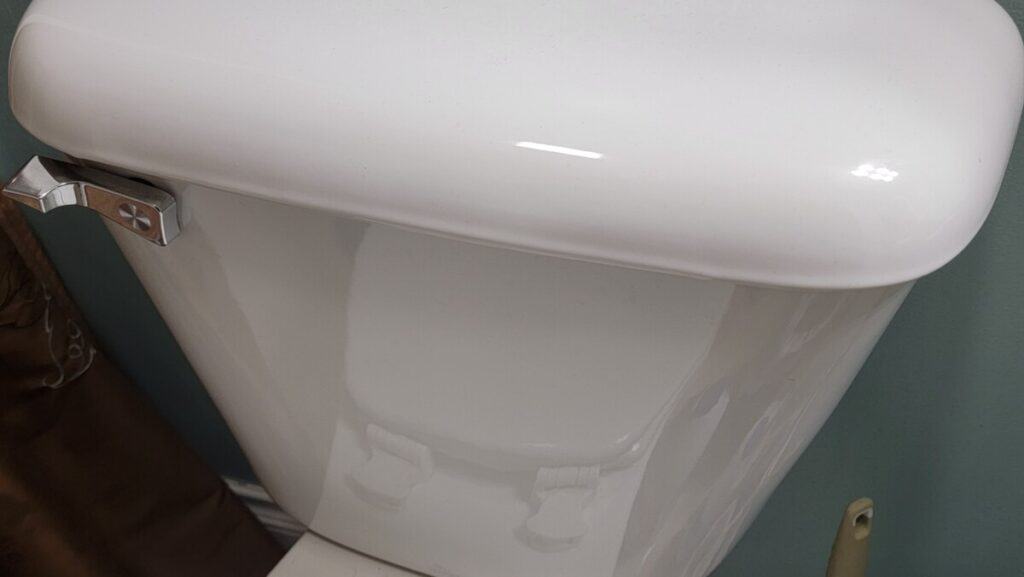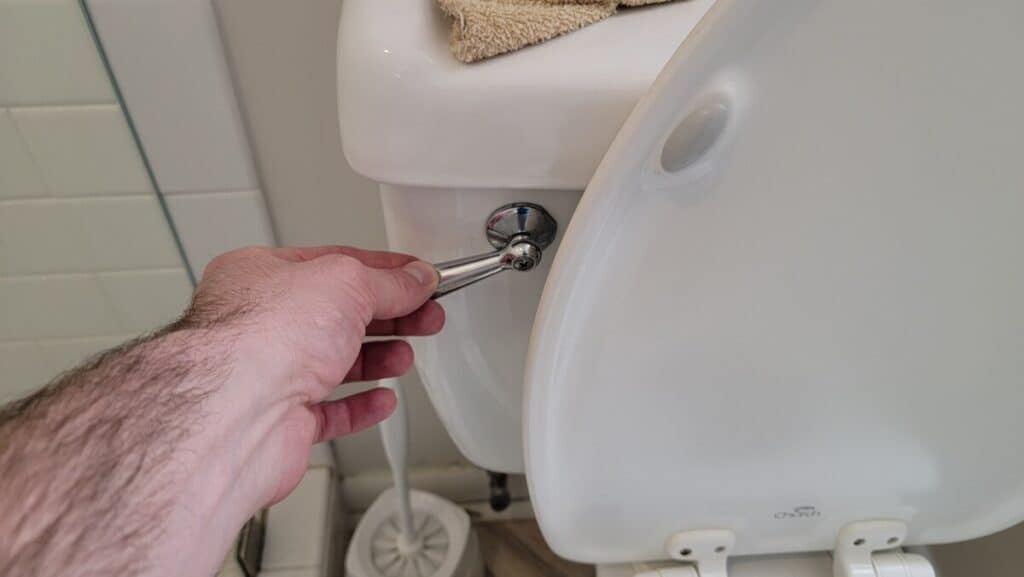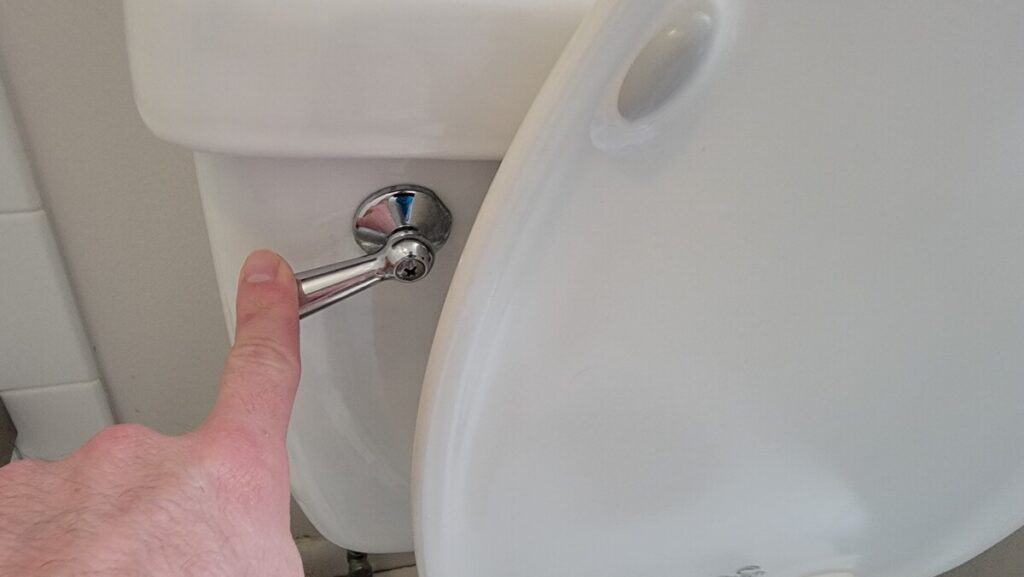Random Toilet Flushing: Causes & Fixes
When it comes to toilets, there are a few things that can cause issues, but one of the most perplexing problems that homeowners might face is the “phantom flush.”
A phantom flush occurs when your toilet seems to flush randomly, even when no one is using it. This can be both annoying and a waste of water.
When I was employed in maintenance at a property housing more than 250 toilets, this very problem would creep up on dozens of occasions over the span of 10 years. In this article, I will guide you through the possible reasons behind a phantom flush and provide simple steps to diagnose and fix the issue.
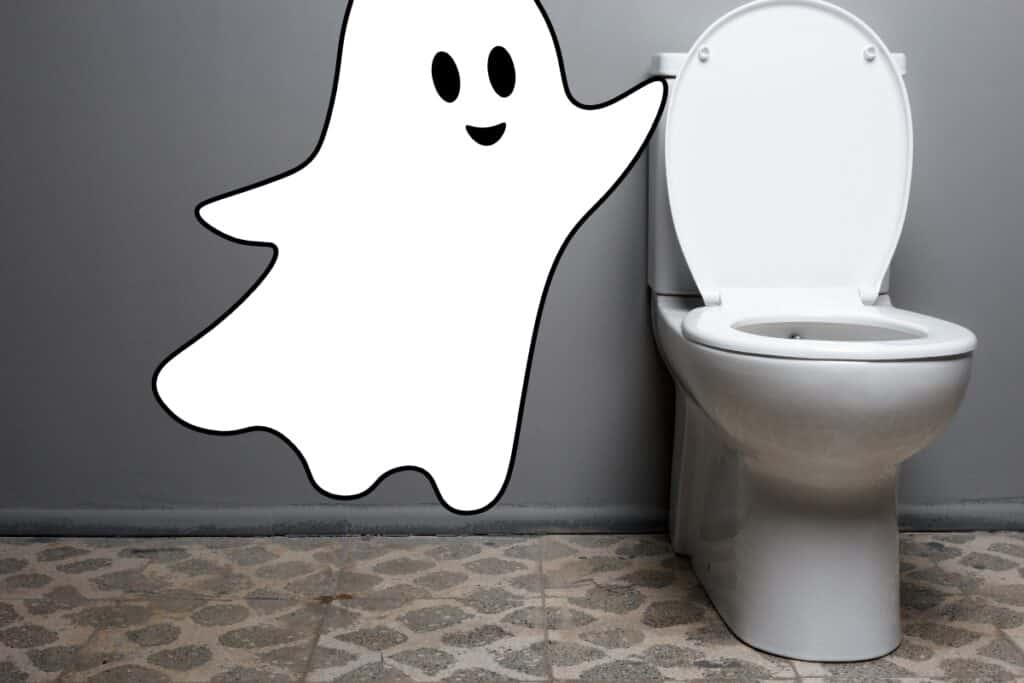
Leaking Flapper Valve
The most common reason behind a phantom flush is a leaking flapper valve. The flapper valve is the rubber seal at the bottom of the toilet tank that opens to release water into the bowl when you flush. If you find that the water level in your toilet is lower than it should be, then the flapper valve and other things could be at play. Check out this article to address a tank with low water levels.
Over time, the flapper valve can wear out, become damaged, or have mineral buildup which will allow water to seep through slowly. As the water level in the tank drops, the fill valve will automatically refill the tank, creating the sound of a phantom flush.
I recommend massaging the bottom side of the flapper with your fingers to clear off any mineral buildup which can prevent the flapper from sealing properly against the valve below it. If this doesn’t fix the problem, you should look at replacing the flapper.
How to Replace Flapper:
- Turn off the water supply to the toilet and flush to empty the tank.
- Remove the old flapper valve by unhooking it from the flush lever and lifting it off the overflow tube.
- Install the new flapper valve, making sure it creates a tight seal with the flush valve seat.
- Reconnect the flapper to the flush lever and turn the water supply back on.
- Test the toilet to ensure the flapper is sealing properly and the phantom flush is resolved.
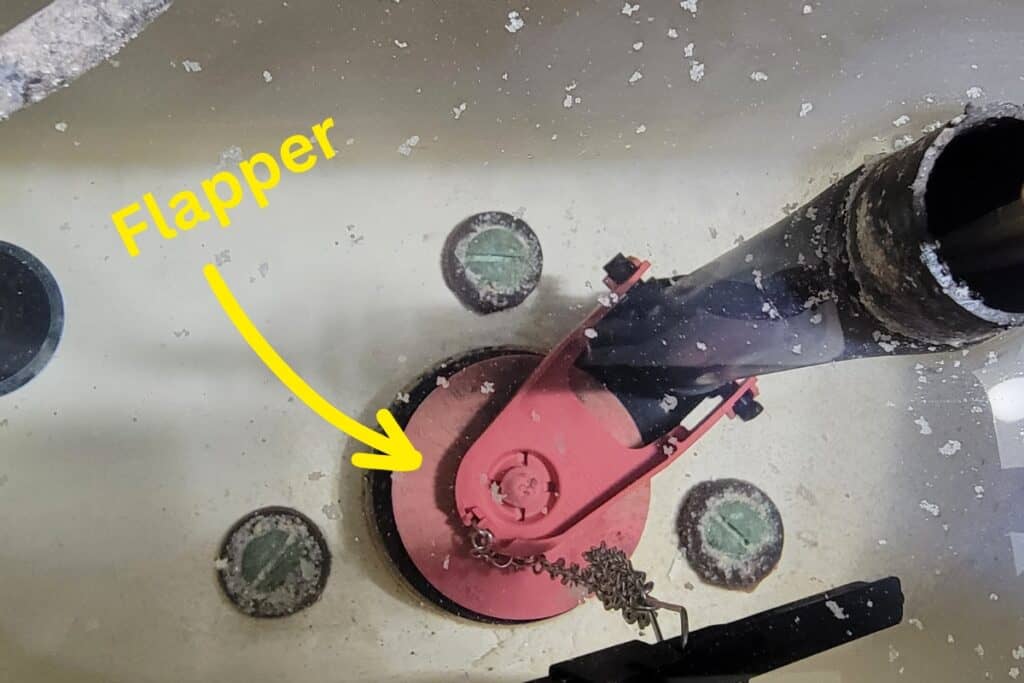
Maladjusted Float
Another possible cause of a phantom flush is a maladjusted float. The float is responsible for regulating the water level in the tank. If the float is set too high, water will flow into the overflow tube, causing the fill valve to activate, and leading to a phantom flush.
How to fix:
- Turn off the water supply to the toilet.
- Adjust the float by either bending the float arm (for a ball float) or turning the adjustment screw (for a float cup) to lower the water level.
- Turn the water supply back on and allow the tank to refill.
- Check the water level to ensure it is below the top of the overflow tube, and the phantom flush issue is resolved.
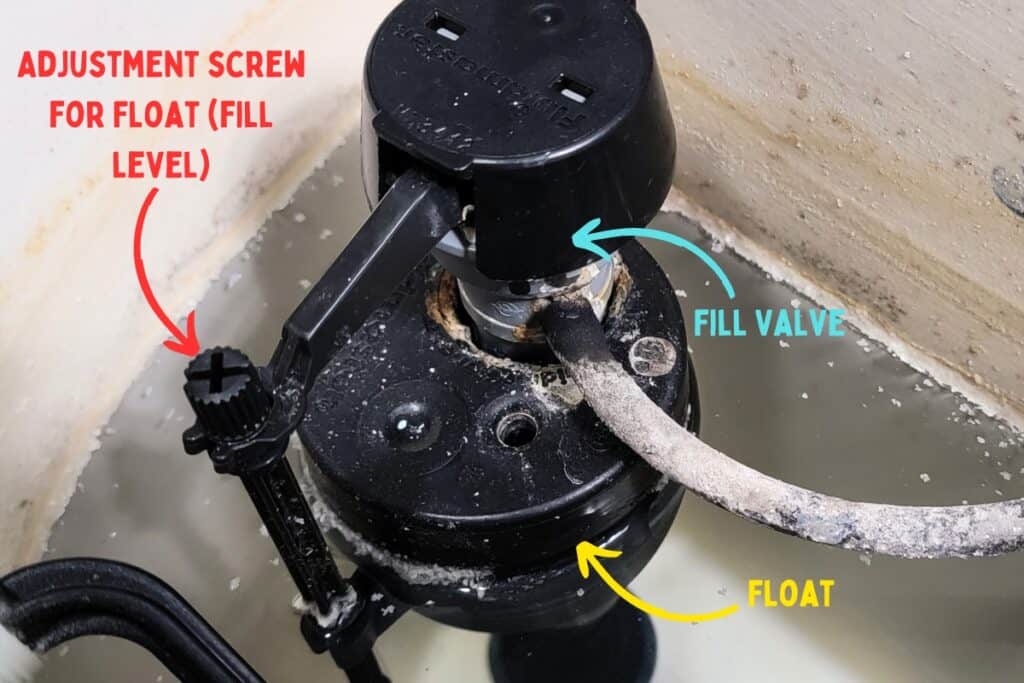
Leaking Fill Valve
A leaking fill valve can also cause a phantom flush. The fill valve is responsible for refilling the tank after each flush. If it is not sealing properly, water will continue to flow into the tank, causing the water level to rise and eventually trigger a phantom flush.
I recommend cleaning out the fill valve first from any mineral buildup or debris. You can follow my instructions on my article here for how to clean out a fill valve. If this doesn’t work, then you should look at replacing it with the instructions listed below.
How to fix:
- Turn off the water supply to the toilet and flush to empty the tank.
- Remove the old fill valve by disconnecting the water supply line and unscrewing the lock nut securing the valve to the tank.
- Install the new fill valve following the manufacturer’s instructions, ensuring a tight connection to the water supply line and the tank.
- Adjust the water level according to the manufacturer’s recommendations.
- Turn the water supply back on and test the toilet to ensure the fill valve is functioning correctly and the phantom flush issue is resolved.

Condensation on the Tank
In some cases, condensation on the toilet tank can create enough water to trickle down into the bowl, simulating a phantom flush. This is more likely to happen in humid environments or during hot weather.
How to fix:
- Insulate the toilet tank with a tank liner or insulation kit to prevent condensation from forming.
- Consider using a dehumidifier in the bathroom to help reduce humidity levels.
- Ensure proper ventilation in the bathroom to help minimize condensation.
Cracked or Damaged Tank
A cracked or damaged toilet tank can also cause a phantom flush, as water leaks out of the tank and into the bowl. If you notice a constant dampness around the toilet, this could be the cause of your phantom flush issue.
How to fix:
- Inspect the toilet tank for any visible cracks or damage. If you find a crack, you may be able to repair it with waterproof sealant, but it is often best to replace the entire tank to prevent future leaks.
- If the tank is not cracked, check the tank-to-bowl gasket and mounting bolts for damage or wear. Replace the gasket or tighten the bolts if necessary.
- If the issue persists, it may be best to consult with a professional plumber to assess the situation and provide a more comprehensive solution.
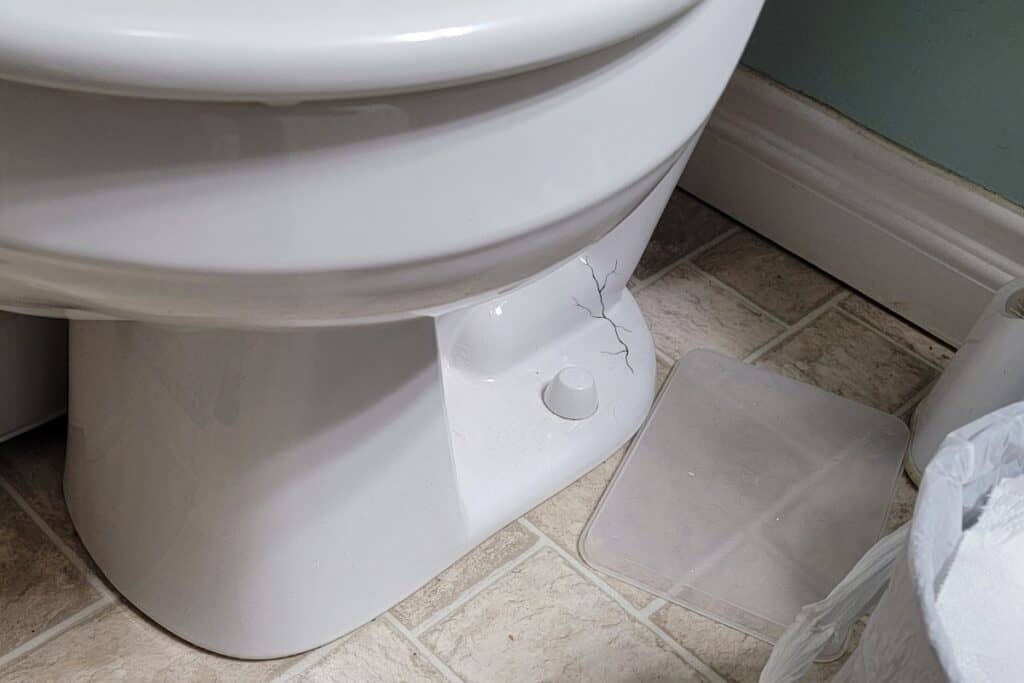
Final Takeaways
While a phantom flush can be an annoying issue, it is often easily resolved with a little troubleshooting and some simple repairs.
By checking for common problems like a leaking flapper valve, a maladjusted float, a leaking fill valve, condensation on the tank, or a cracked or damaged tank, you can identify the cause of the phantom flush and take steps to fix it. By doing so, you’ll not only save water but also prevent any potential damage to your bathroom flooring or structure caused by constant water leaks.
Remember, if you are ever unsure about tackling a plumbing issue yourself, it’s always a good idea to consult with a professional plumber or trusted handyman.



